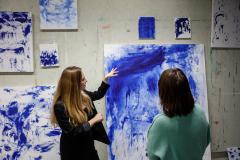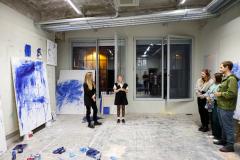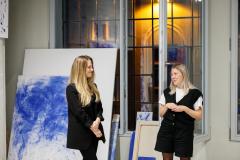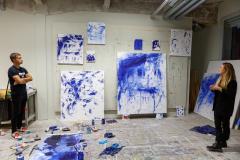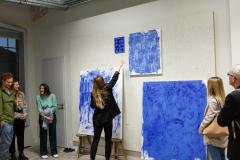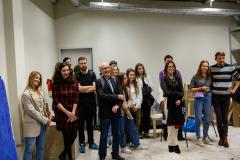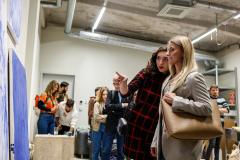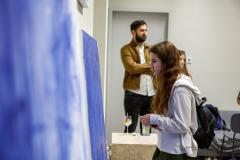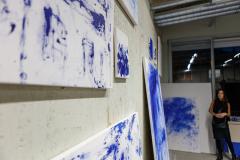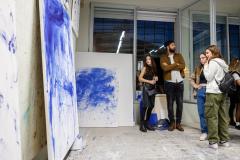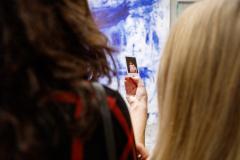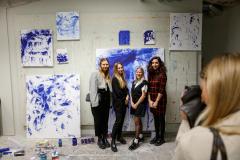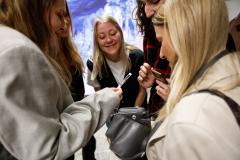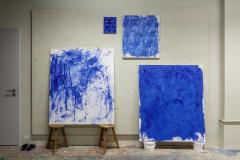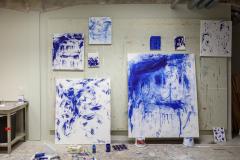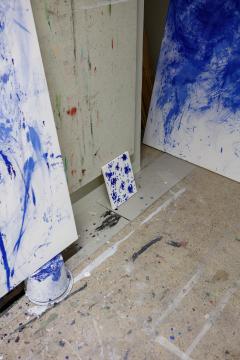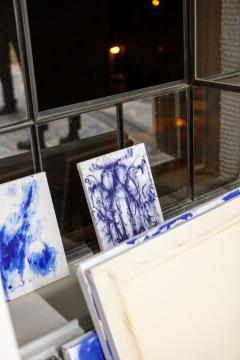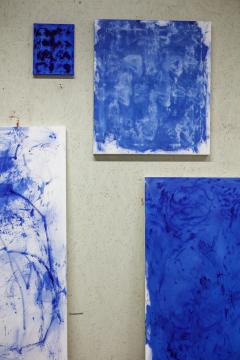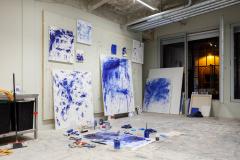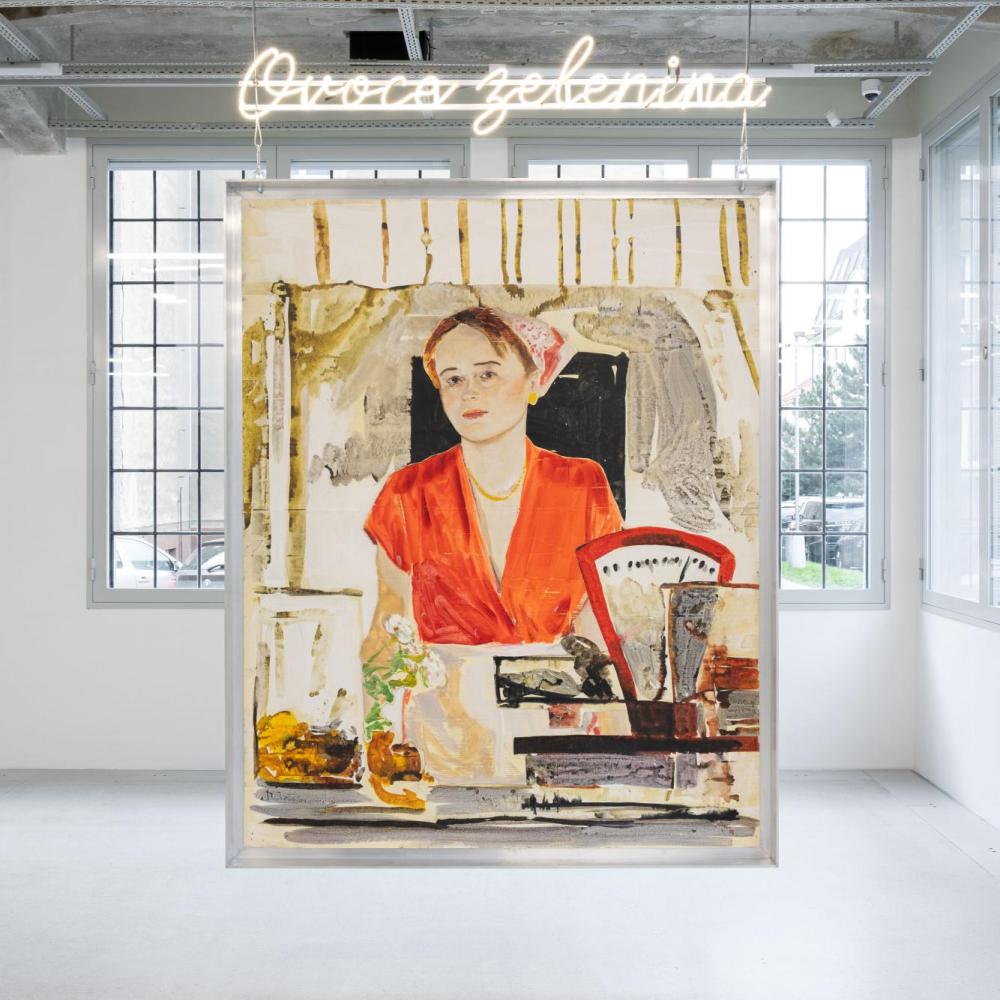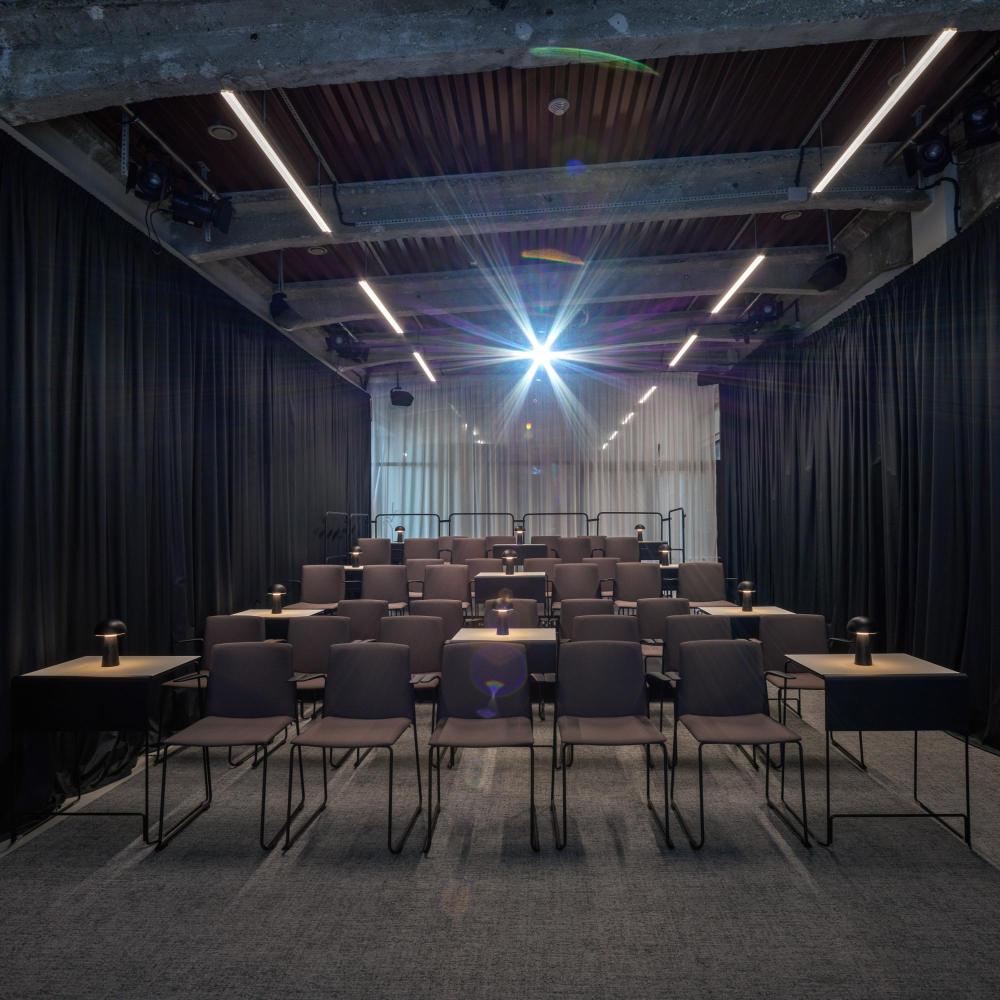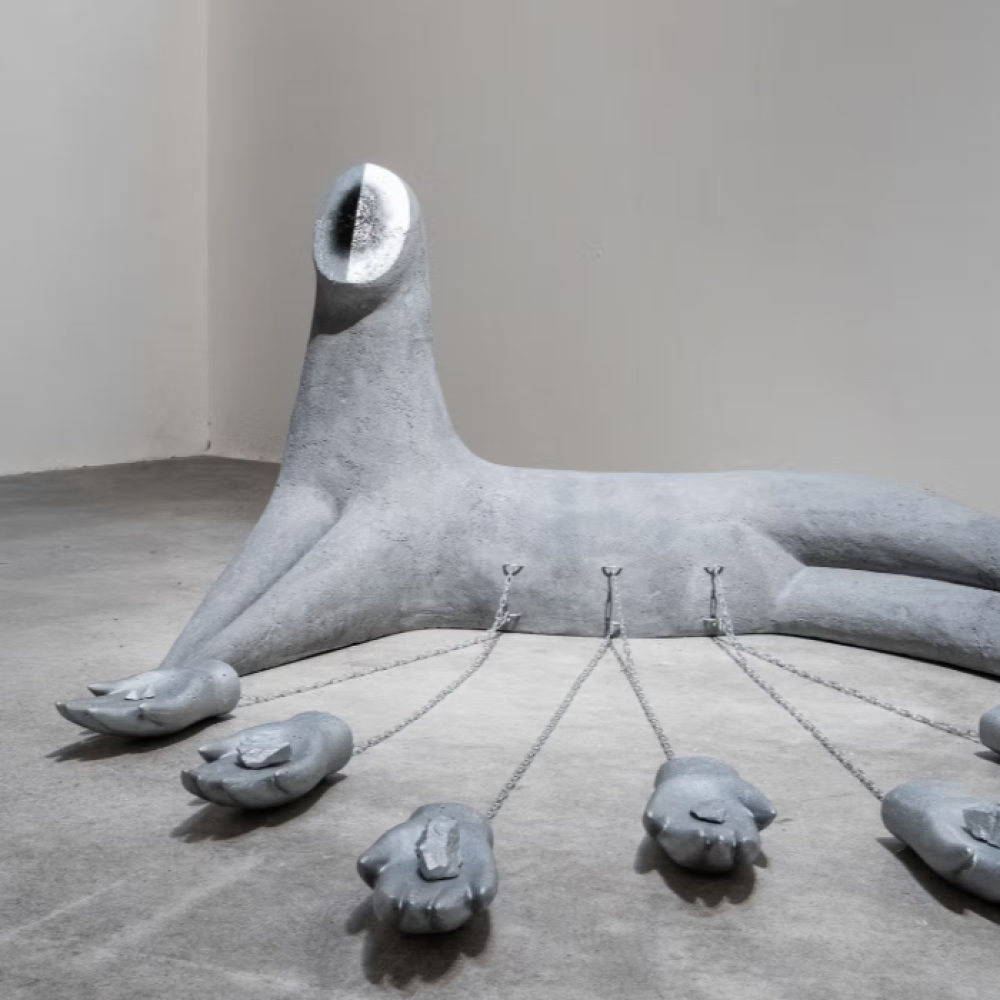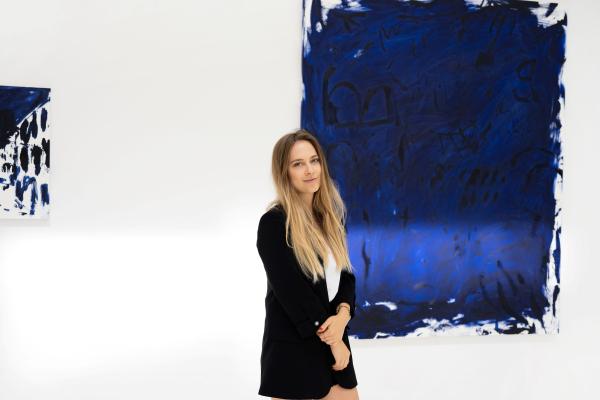
Barbora Valášková (*1990) graduated from the Painting Studio of Robert Šalanda and Lukáš Machalický at the Academy of Fine Arts in Prague. Her work is characterised by large formats, raw painting, minimalist abstract expression and above all shades of blue. This unifying element gives the paintings a meditative character, but the painter also hides behind it the expression of her own inner feelings and emotions. Through her paintings, she presents the viewers with moments frozen in time, recorded situations - stories, which the observer must grasp on his own, but through abstraction he is left room for his own imagination or contemplation. Barbora Valášková has already presented her works at a number of Prague exhibitions, for example at the OFF - HIBIT joint exhibition at DSC Gallery or as part of the TA malba project at Trafo Gallery, which presented paintings by young Czech artists. In 2022, Valášková presented her work in a solo exhibition entitled Blau at the Hybernská Campus.
How was your journey to the Academy to the Painting Studio of Robert Šalanda and Lukáš Machalický?
It was slightly longer and unexpected. After five years, I left high school and went to study design at the secondary art school in Uherské Hradiště. I was tempted by the idea of doing interior design one day, leaving aside my childhood dream of being an actress. At that time I thought why does anyone study painting, it's useless and impractical. Towards the end of my studies, I started painting for myself and two years later I was accepted to the Academy of Fine Arts. From my original studio I went to Jiří Sopko for an internship, after whom Robert and Lukáš took over the studio, and from whom I graduated.
Many abstract artists draw on personal experiences or external influences. Can you share any specific events, places or people that have influenced your work?
Like most artists, I draw from my personal life, thoughts, and frame of mind. I think it's inevitable. I am also influenced by the thoughts, opinions and behaviour of others, although I don't let it show. There are often references to a situation or place in my paintings, either in a positive or negative way, but it's hard to pick out one particular event. Usually the negative ones resonate more with me, so it's also harder to talk about. For a long time the images also reflected a reference to one particular person.
You've only painted in blue for about eight years. Is there a particular philosophy or idea behind your artistic approach to the colour blue? Aren't you afraid that one day you will lose your connection to it?
I started using blue intuitively when I didn't have a good relationship with the studio management and didn't feel comfortable there. I find blue to be sophisticated, non-violent, welcoming, and almost everyone who looks at my paintings will tell me that they calm them down. I'm not afraid of losing the bond, I'll take it as we've had many wonderful years together, we've passed on what we had and life will go on. It's like with relationships, you can have multiple fatal ones in a lifetime too.
What are your favorite materials or techniques that you often use in your abstract art?
I paint with oil paints. Compared to acrylics, they don't dry in minutes, so I'm always working with fresh paint and don't have to rush, which suits me. I often just observe the painting and take my time. Of course I use brushes, but I also paint with my hands to a large extent. In design I was used to modeling, working with different materials and making models for designs. I really enjoyed the process of making, specially the puttying and sanding and the overall haptic contact with the product, at the moment with the painting. I also use pieces of cloth, cardboard and so on.
What is the process of your painting? How do you decide what shapes and compositions to use?
It's all about my state of mind at the moment. Even when I have a clearer idea, it often turns out very differently. Overall, the process of painting is unpredictable. That's one of the reasons I don't do sketches. The sketch itself is already a finished painting for me.
How has your artwork evolved since you started painting in blue? Do you see any evolution in your style or ideas?
The highlight for me was my fifth year and then my thesis, when I finally identified 100% with the paintings. It summed up my feelings and setting at the time as much as possible. The train of thought is different over the years, of course, but fundamentally I guess you don't change much. Over time, I have incorporated figurative elements into the paintings and loosened my handwriting more.
What kind of reactions do you get from viewers in relation to your paintings? What do you think people see or feel when they look at your works? And how do you deal with any criticism or misunderstanding of your decision to work with one colour?
I get positive reactions, but of course I know there will always be the opposite, which is fine. You can never please everyone and if the criticism is constructive, it's only a benefit. As far as what viewers feel when they look at my paintings, the most common thing I hear is that they feel a sense of calm, which makes me happy. I am often asked by others why I only paint blue, and how long it lasts, but generally it is more a matter of interest than misunderstanding.
What is your relationship with abstract art in general? Why did you choose this form of expression?
As an observer, I increasingly find pleasure in figurative work and classical art, but as an artist I tend to gravitate more towards abstract painting with figurative elements. In general, freedom is important to me in life and a more abstract approach allows me to express it. I don't feel boundaries in painting, which is important to me.
Do you have any immediate plans for your art?
There will be a joint exhibition at SmetanaQ in Prague from December 19. Early next year, my painter friends and I are planning a trip to Asia and we would like to anchor in one place for a while and paint there. In the fall, we are planning a joint exhibition with sculptor Nikola Emma Ryšavá, with whom I spent a month in residency at the Telegraph.
